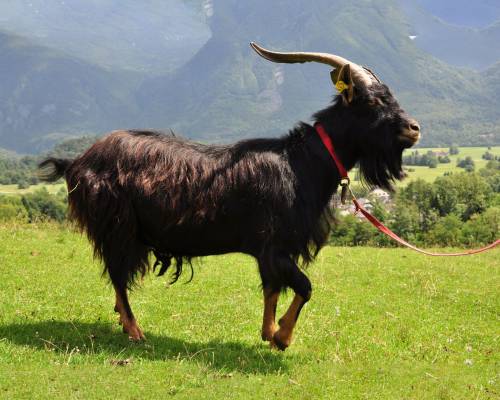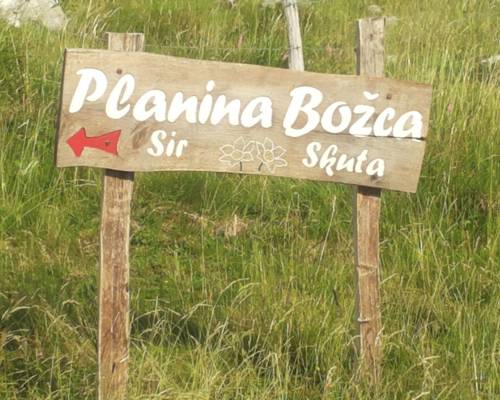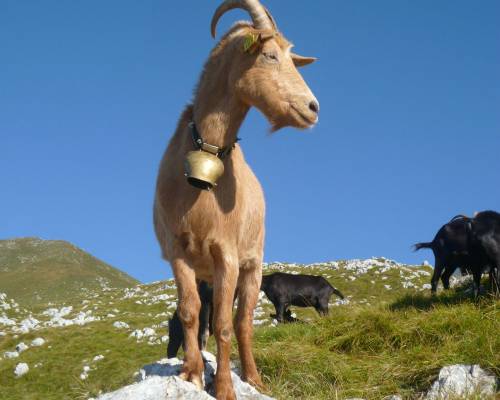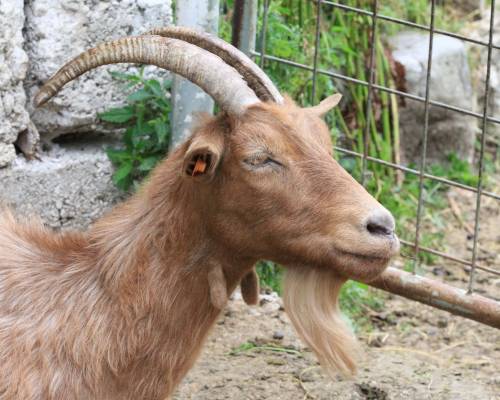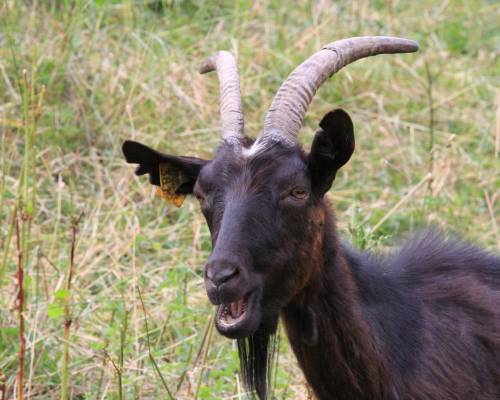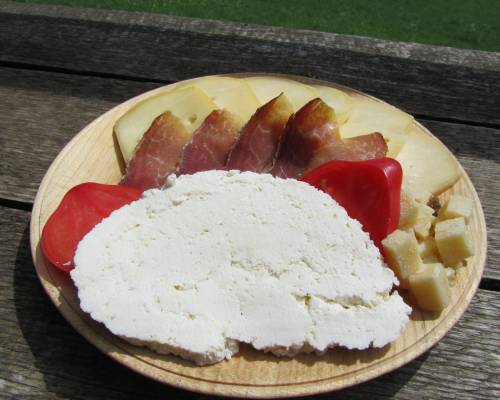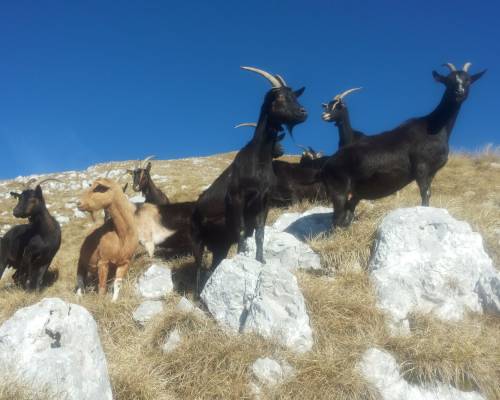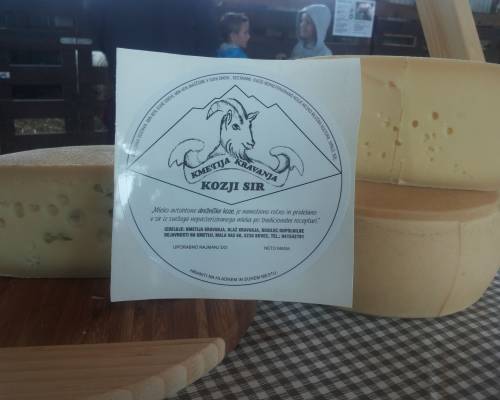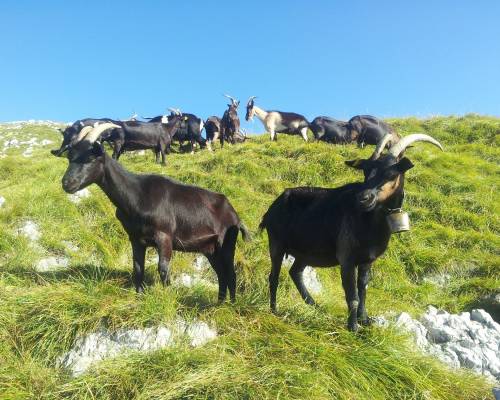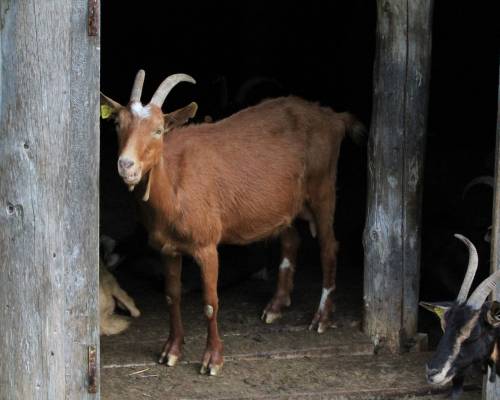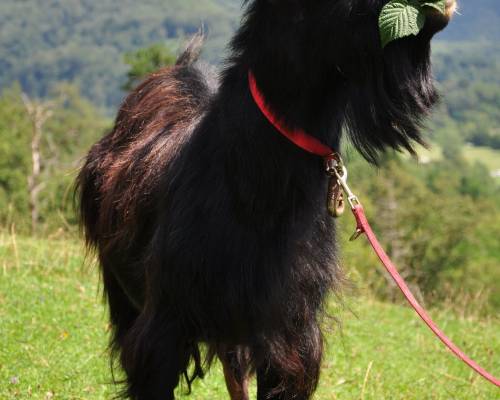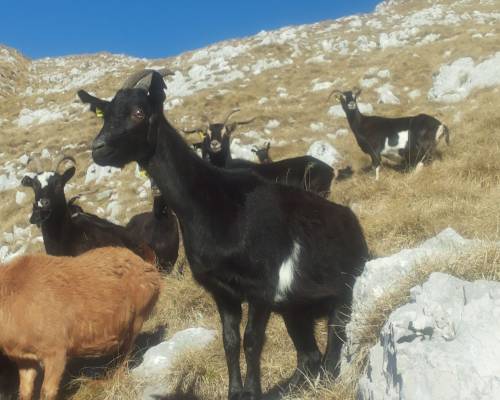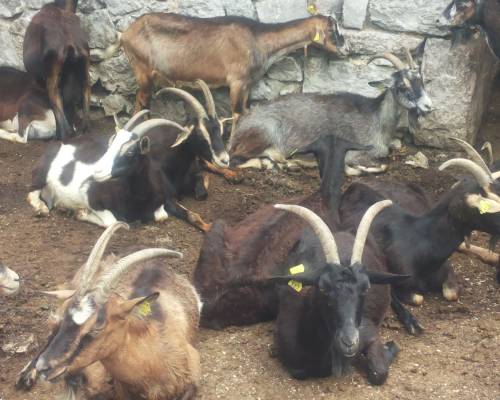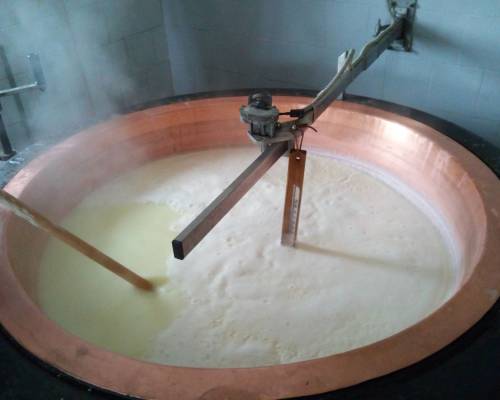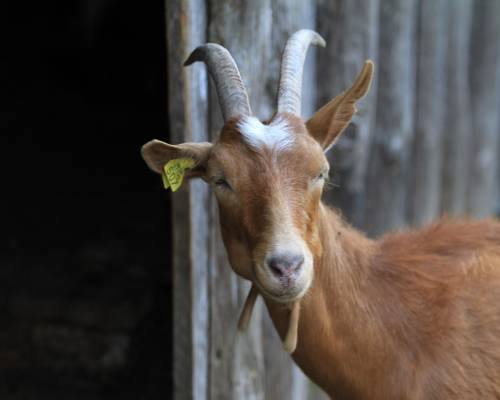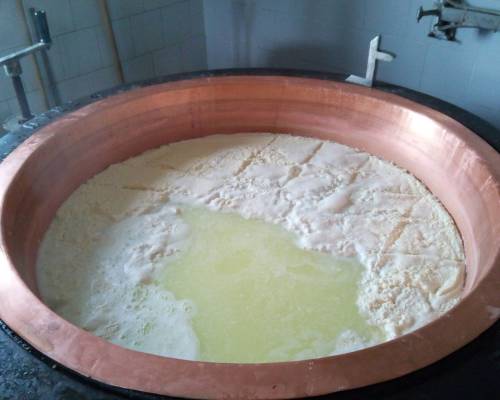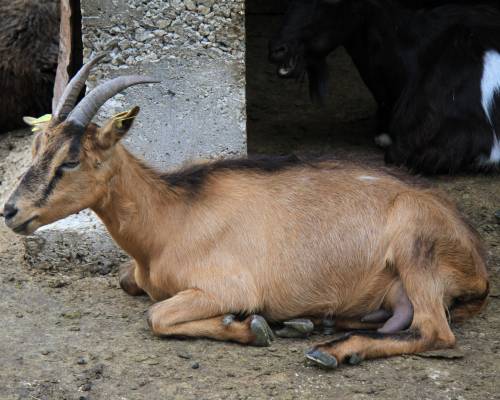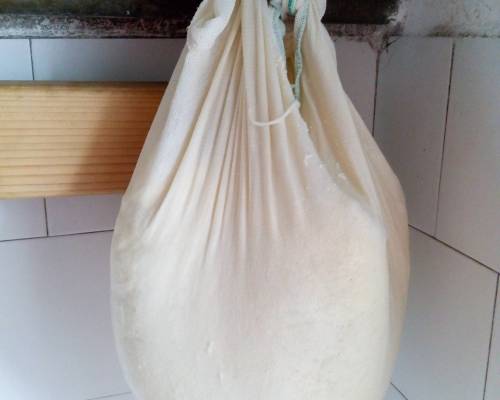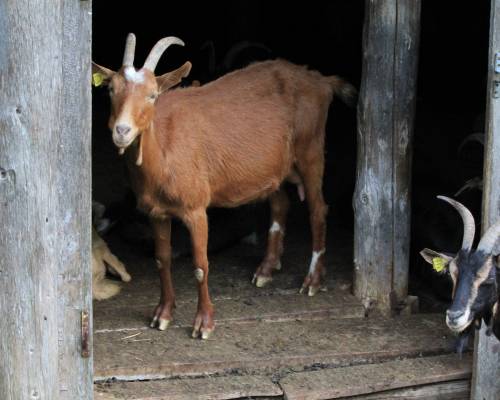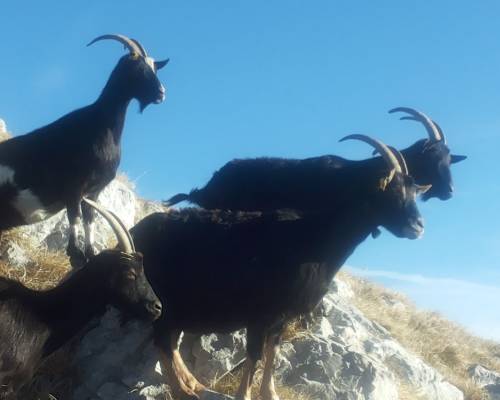Drežnica goat
Origin and Development of the Breed
The Drežnica goat, the only recognized Slovenian autochthonous goat breed, originates from the Posočje region, particularly around Bovec and the village of Drežnica, from which it derives its name. Historically, goat farming was well-established in this area due to natural conditions unfavorable for intensive livestock breeding. The indigenous goats provided a vital source of meat, milk, and dairy products.
Breed Characteristics
Drežnica goats exhibit a variety of coat colors and patterns, with darker shades such as black and black-brown being predominant. Bucks typically weigh between 65 and 80 kg and stand 65 to 75 cm at the withers, while does weigh between 45 and 60 kg with a withers height of 60 to 70 cm. Both sexes are usually horned, with buck horns reaching up to one meter in length. The average milk yield for does under milk recording is approximately 360 kg per lactation, containing 4.3% fat and 3.4% protein; top-producing individuals can yield over 500 kg of milk. The average litter size is 1.36 kids for dairy-type goats and 1.07 for meat-type goats.
Breed Distribution and Endangerment
As the least numerous among Slovenian autochthonous domestic animal breeds, the Drežnica goat population is critically endangered. Approximately 1,350 breeding animals are registered in the original herdbook, with herds primarily concentrated in the northwestern part of Slovenia.
Did You Know ...
...that Drežnica goat breeders have specific names for different coat colors?
Number of animals
Farm locations
Breeding Purpose and Products
Historically, two breeding types of Drežnica goats have developed based on regional practices:
-
Dairy Type: Predominantly found in the Bovec area, these goats are raised for milk production. During summer, they graze on alpine pastures like the Bošca plateau, where farmers produce excellent dairy products from raw, full-fat goat’s milk or mixed goat and cow milk.
-
Meat Type: In the Drežnica region, goats are primarily bred for meat. They graze in high-altitude areas, such as the slopes of Krasji Vrh, for more than half the year. This grazing practice helps maintain biodiversity, landscape preservation, and cultural heritage. Kids intended for slaughter are usually sold around Easter, with their meat being highly valued in gourmet cuisine.


